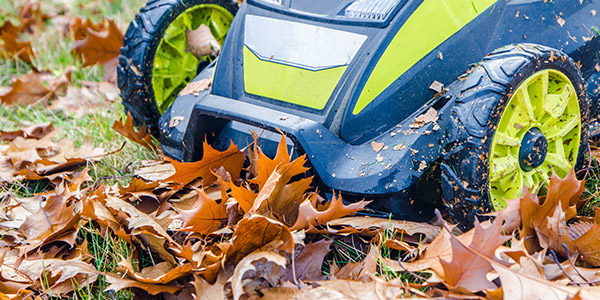Homeowners
Late-Season Lawn Care
November 3, 2017
Having a lush, green lawn is one of the benefits of homeownership. From birthday parties and backyard barbeques, it sets the stage for fun times. For many homeowners, it’s also a source of pride. However, having a lawn you feel good about requires regular hands-on maintenance and some additional preventive care, especially in the fall, regardless of where you live.
Fall Prep Tips for Colder-Climate Lawns
Northern areas have more to do when it comes to prepping lawns for winter. Here are some actions that will help ensure healthier growth in the spring.
- Rake: Fallen leaves prevent sunlight from reaching the grass, which is needed for strong root growth. Once the leaves are gathered, you can shred them for composting and add them to your flowerbeds to insulate your perennials from the cold and enrich your soil. As another option, consider using your mower to mulch leaves.
- Dethatch: After raking fallen leaves, use the opportunity to get rid of any thatch, which is pale, dead grass that can also block sunlight, air, and water. A spring-tined rake is perfect for the job. Alternatively, you can rent a dethatcher, or power rake, but make sure it is clean and in good condition before you use it. Otherwise, it could potentially expose your lawn to a contaminant.
- Fertilize: Feeding your lawn is an important step to ensuring it stays strong and healthy. Be sure to use a fertilizer designed to bolster grass for colder weather and encourage growth.
- Resod or Reseed: Fall is the perfect time to fill in any bald patches that may have occurred over the summer. Lawn care consultants recommend using turfgrass seed formulated specifically for your region. Local nurseries that supply sod to lawn care services tend to carry it, though it is likely to be a bit more expensive than national package brands.
Advice for Warmer-Weather Regions
In areas where the seasons are less dramatic, fall prepping is still advisable to take advantage of the cooler temperatures and the rainy weather that accompany it.
- Overseed: Spreading grass seed over existing turf helps keep grass green. Perennial ryegrass can be especially effective in accomplishing this.
- Water: You might find you can reduce how often you water your lawn depending on the amount of rain your area gets during winter months. However, be sure your lawn gets an adequate amount so it looks its best-come spring.
- Treat for Weeds: Get ahead of winter weeds by applying pre-emergent herbicides. Later in the season, you can spot-treat any existing or new weeds.
Reap the Reward
Your lawn enhances your home’s curbside appeal and provides a beautiful space for making lasting memories. Keep it healthy and well-tended, and you’ll enjoy it, and your neighbors’ envy, for years to come.




